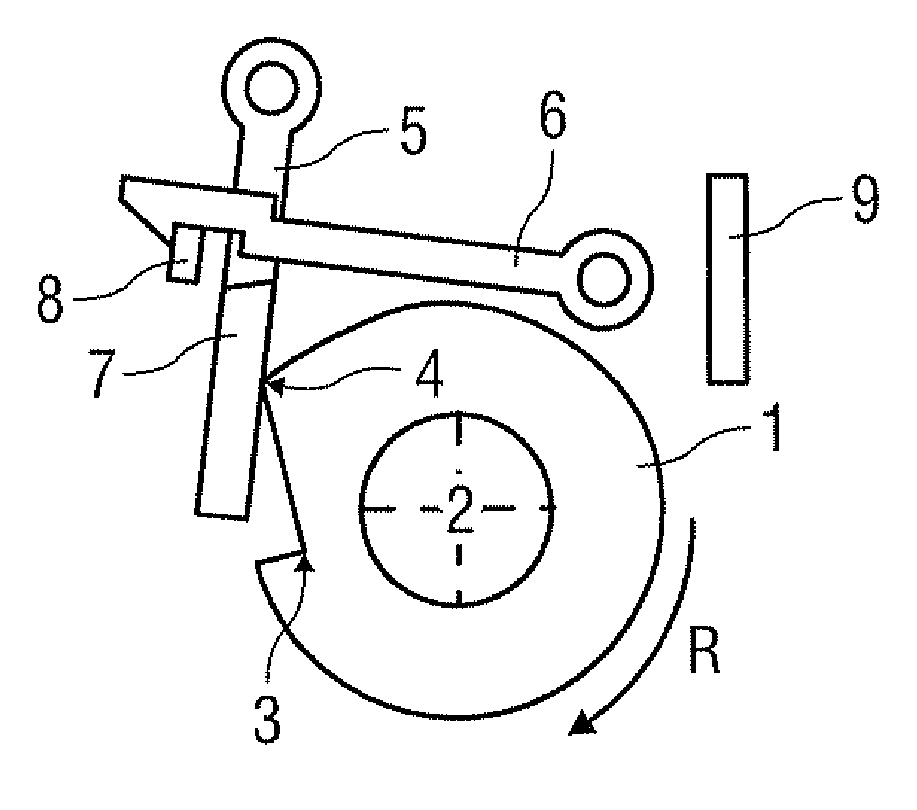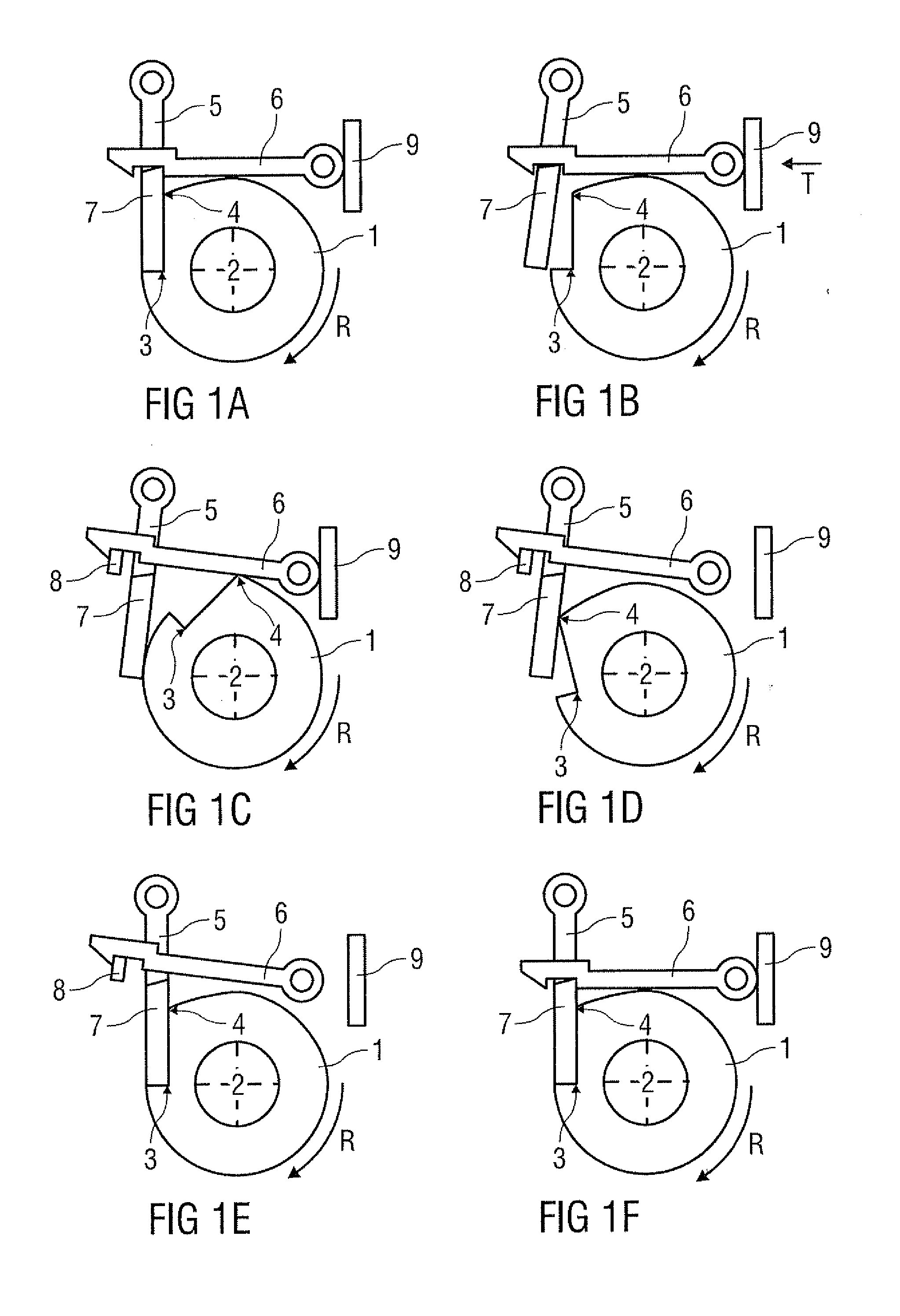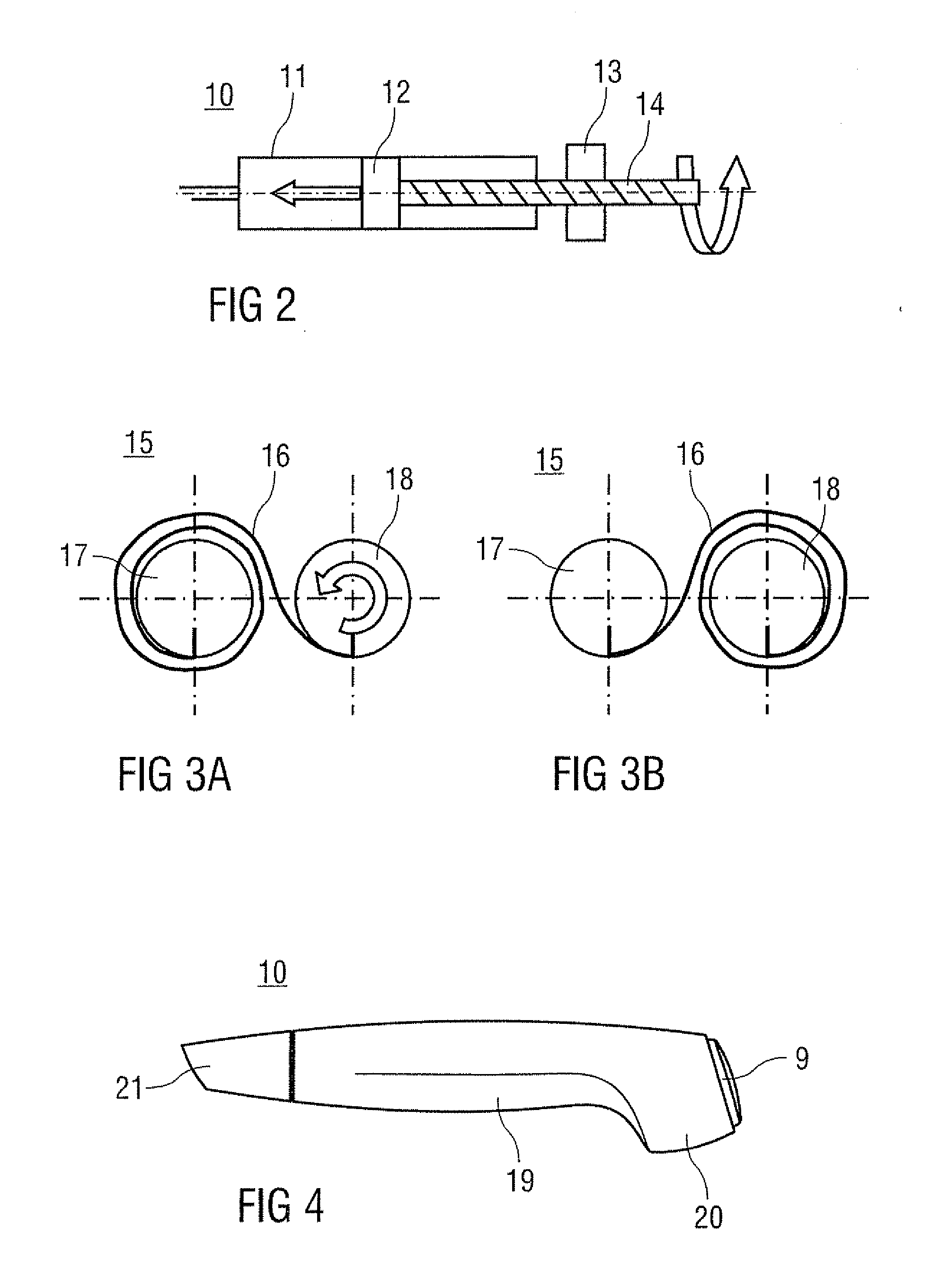Interlock mechanism for a drug delivery device and drug delivery device
a technology of interlocking mechanism and drug delivery device, which is applied in the direction of medical syringes, intravenous devices, automatic syringes, etc., can solve the problems of affecting the safety of users, the device is more complicated to use, and the action required, for example pulling, pushing or twisting to charge the spring, etc. problem, to achieve the effect of preventing the device from being used, the main user risks have been identified with the devi
- Summary
- Abstract
- Description
- Claims
- Application Information
AI Technical Summary
Benefits of technology
Problems solved by technology
Method used
Image
Examples
Embodiment Construction
[0039]FIG. 1A shows a rotatable component 1 of a drug delivery device (not shown) with an interlock mechanism for controlling rotation R of the rotatable component 1. The embodiment shown is intended to be applied as a multiple-dose interlock mechanism that is suitable for a “screw” based autoinjector.
[0040]For the purposes of this description a “screw” based autoinjector mechanism is one where rotation of the rotatable component 1 about a longitudinal axis 2 (normal to the image plane of the figures) of the drug delivery device (autoinjector) causes a plunger / piston (not shown) to advance along a drug container body (syringe, not shown), forcing drug to be dispensed from the other end of the container (e.g. via a needle).
[0041]In this embodiment one dose of drug is delivered by one full rotation of the rotatable component 1.
[0042]The interlock mechanism comprises:
[0043]a cam profile on the rotatable component 1, the cam profile having a catch 3 and a cam 4;
[0044]a swivel mounted la...
PUM
 Login to View More
Login to View More Abstract
Description
Claims
Application Information
 Login to View More
Login to View More - R&D
- Intellectual Property
- Life Sciences
- Materials
- Tech Scout
- Unparalleled Data Quality
- Higher Quality Content
- 60% Fewer Hallucinations
Browse by: Latest US Patents, China's latest patents, Technical Efficacy Thesaurus, Application Domain, Technology Topic, Popular Technical Reports.
© 2025 PatSnap. All rights reserved.Legal|Privacy policy|Modern Slavery Act Transparency Statement|Sitemap|About US| Contact US: help@patsnap.com



